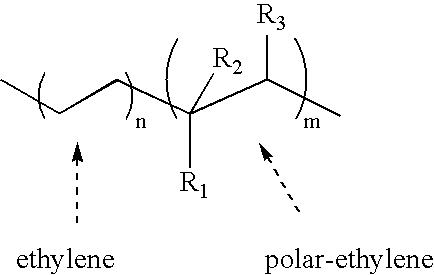Peelable, biaxially oriented polyester film
- Summary
- Abstract
- Description
- Claims
- Application Information
AI Technical Summary
Benefits of technology
Problems solved by technology
Method used
Image
Examples
##ventive example 1
INVENTIVE EXAMPLE 1
[0128]Chips comprised of polyethylene terephthalate were fed to the extruder for the base layer (B).
[0129]Chips comprised of polyethylene terephthalate and particles were likewise fed to the extruder (twin-screw extruder) for the outer layer (C). The raw materials were melted and homogenized in the two respective extruders in accordance with the process conditions listed in the table below.
[0130]Alongside this, a mixture comprised of 80% by weight of ethylene-methyl acrylate copolymer (LOTRYL® 24 MA07 from Arkema, DE) and 20% by weight of polyester, inclusive of antiblocking agent, was fed to a twin-screw extruder with vent(s), for the sealable and peelable outer layer (A). The raw material was melted in the twin-screw extruder in accordance with the process conditions stated in the table below.
[0131]Coextrusion in a three-layer die was then used to superpose the three melt streams and discharge them over the die lip. The resultant melt film was cooled and then a ...
PUM
| Property | Measurement | Unit |
|---|---|---|
| Temperature | aaaaa | aaaaa |
| Percent by mass | aaaaa | aaaaa |
| Percent by mass | aaaaa | aaaaa |
Abstract
Description
Claims
Application Information
 Login to View More
Login to View More - R&D Engineer
- R&D Manager
- IP Professional
- Industry Leading Data Capabilities
- Powerful AI technology
- Patent DNA Extraction
Browse by: Latest US Patents, China's latest patents, Technical Efficacy Thesaurus, Application Domain, Technology Topic, Popular Technical Reports.
© 2024 PatSnap. All rights reserved.Legal|Privacy policy|Modern Slavery Act Transparency Statement|Sitemap|About US| Contact US: help@patsnap.com








